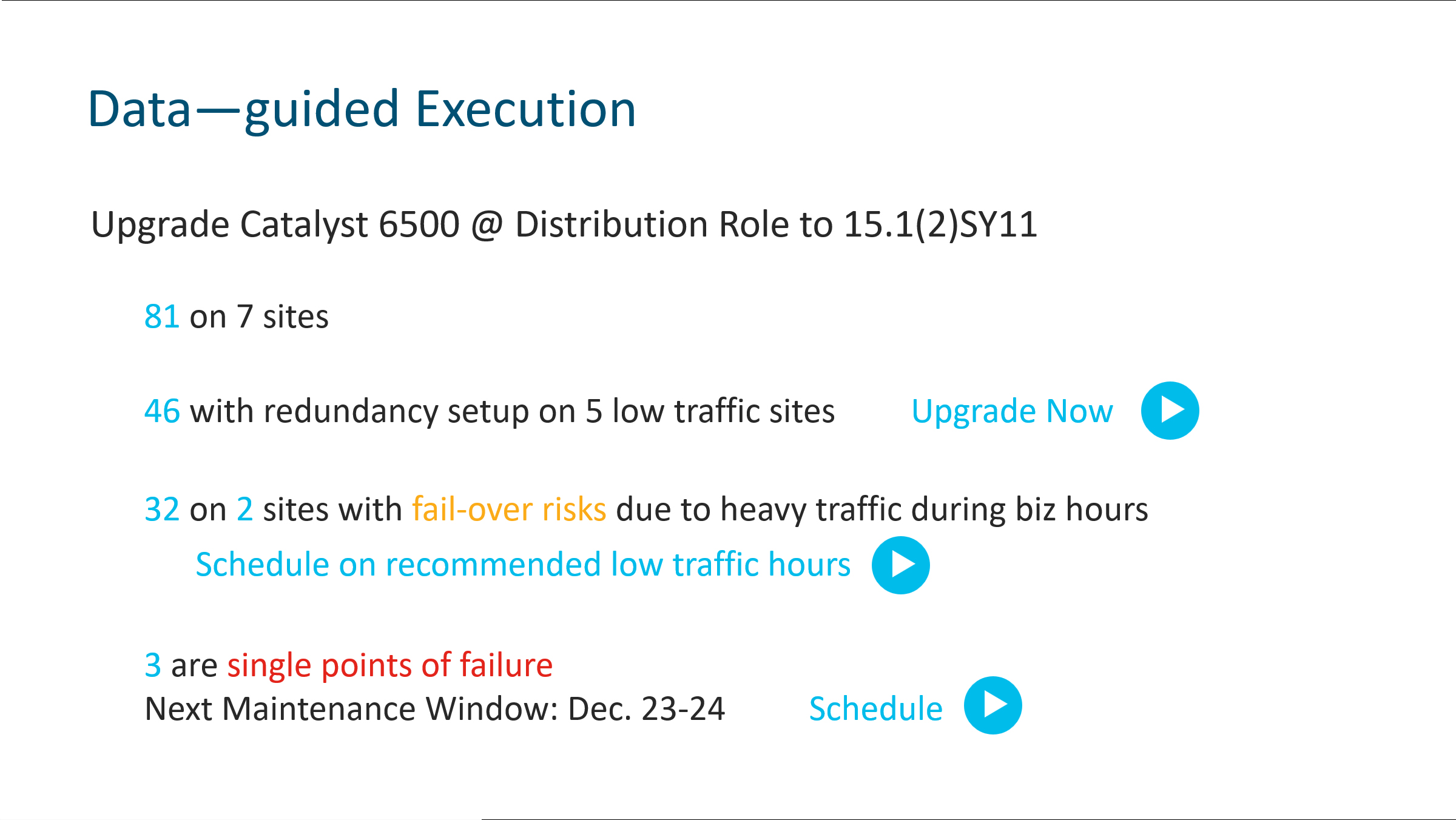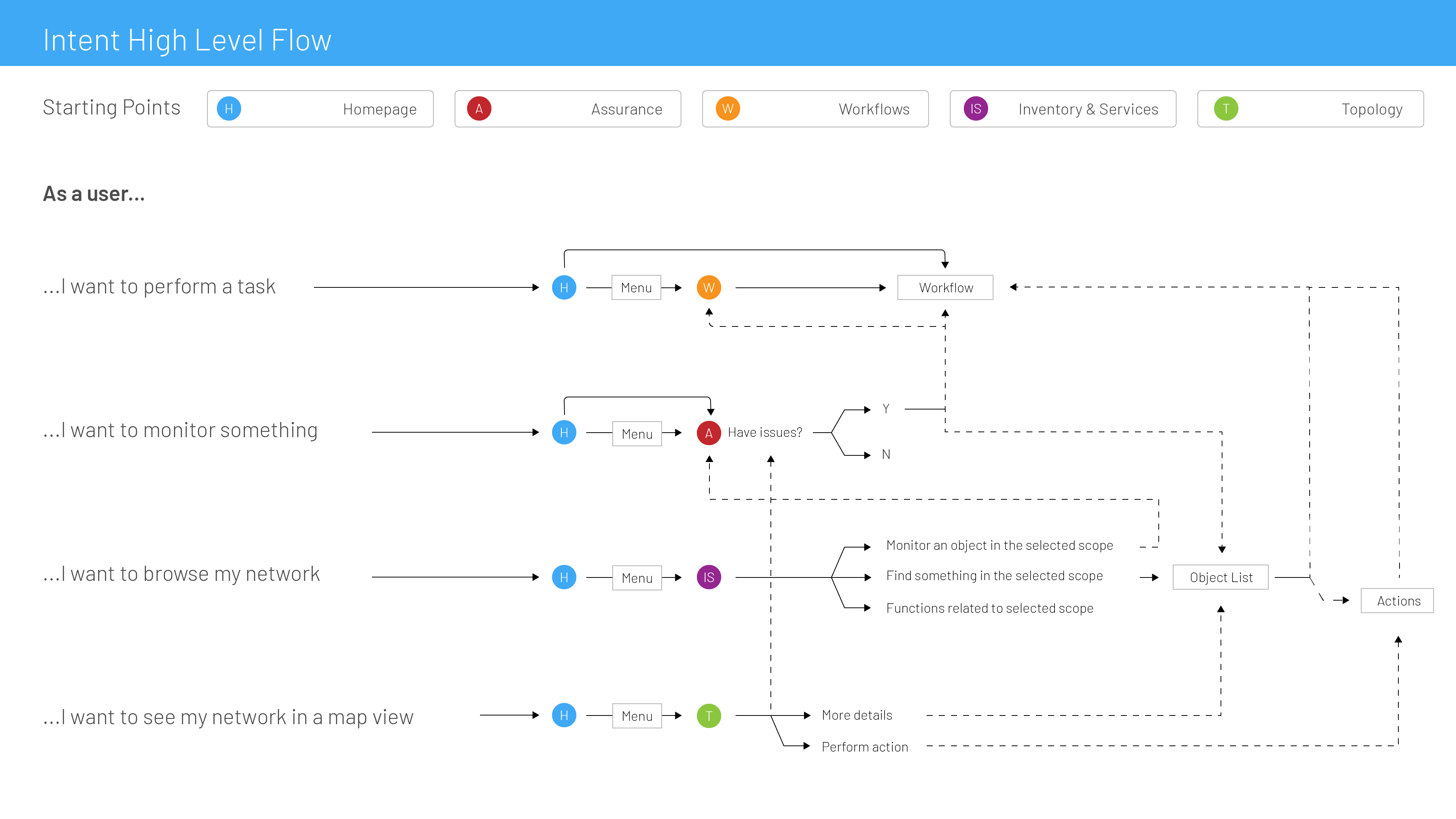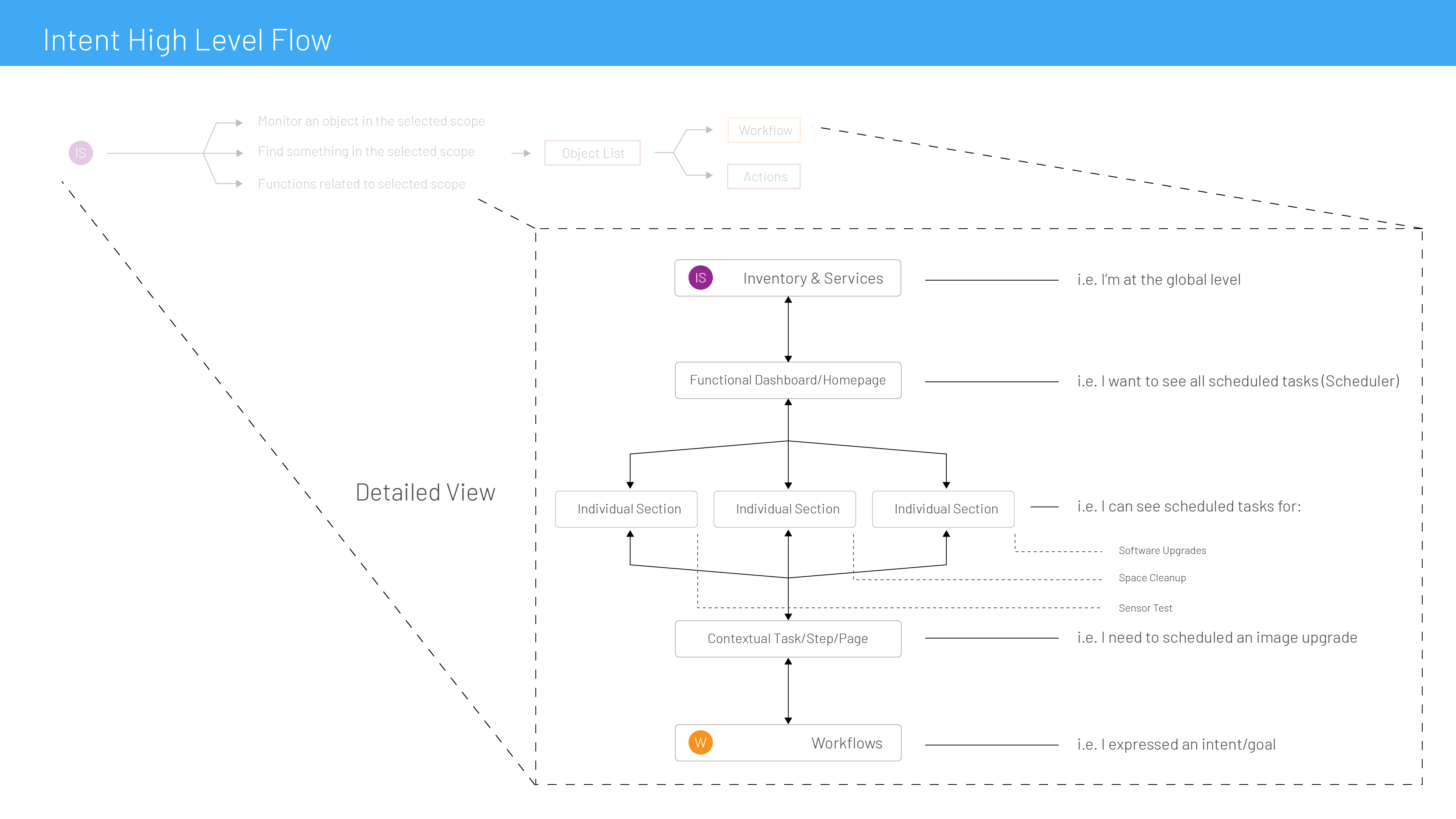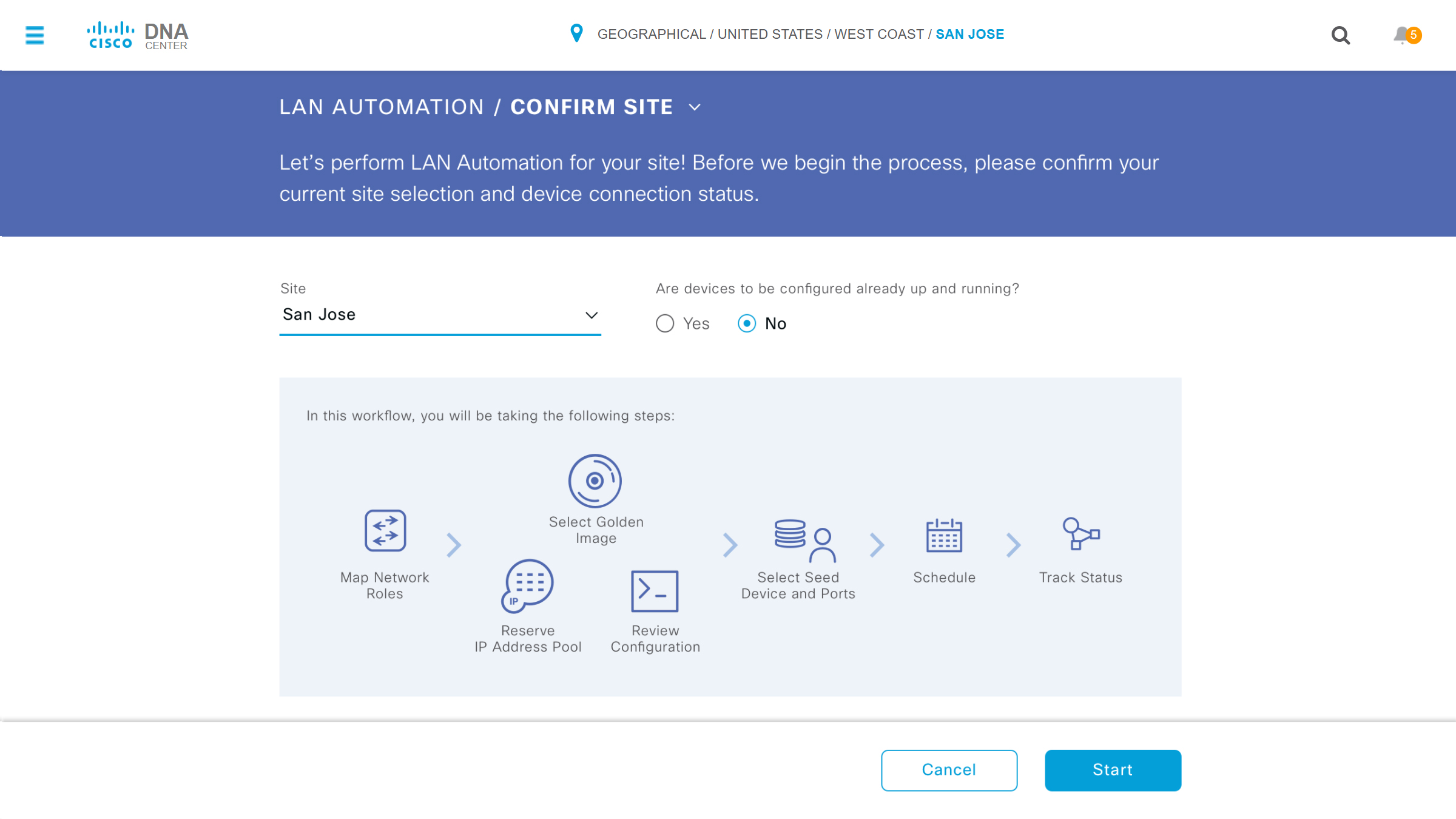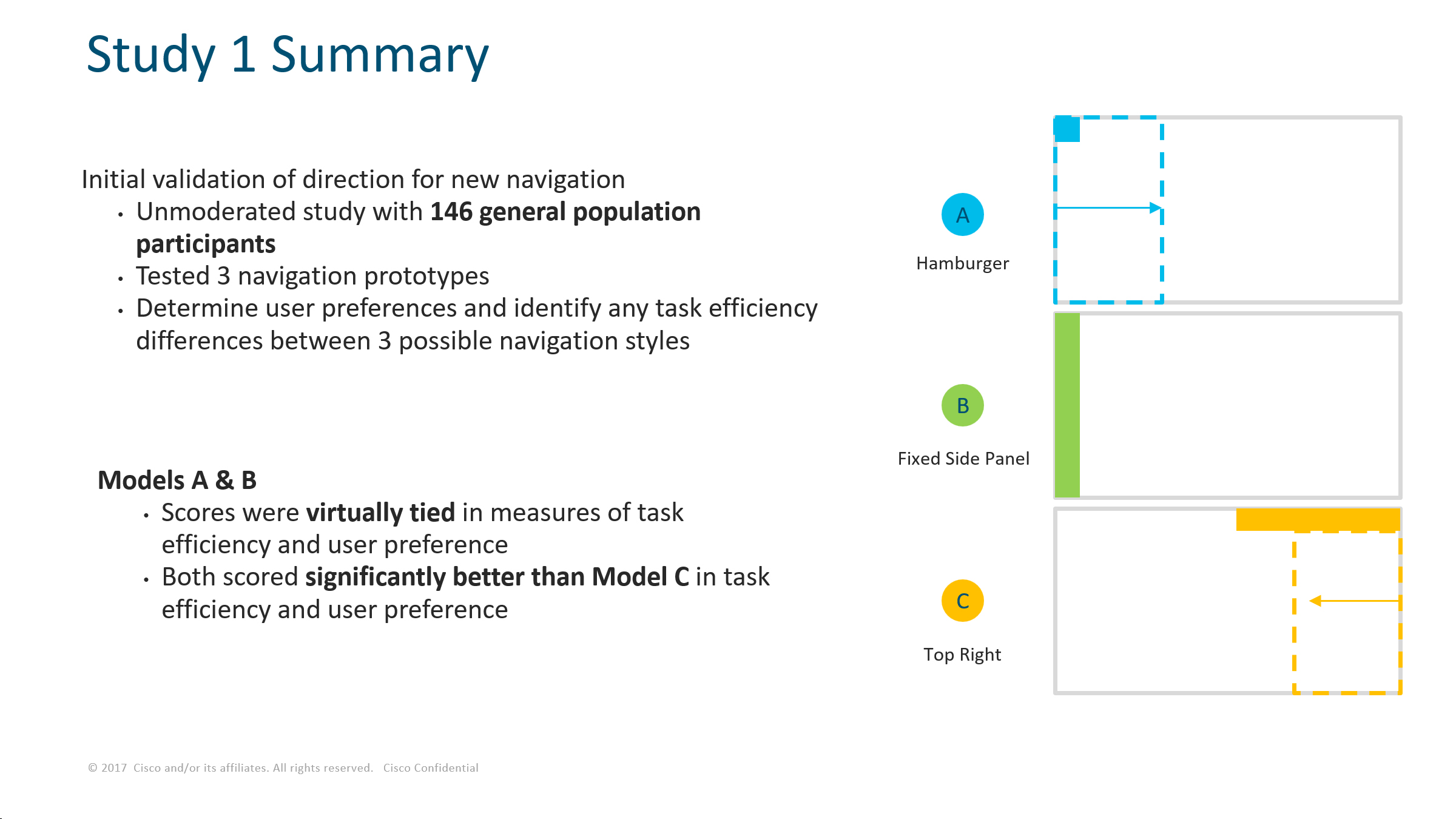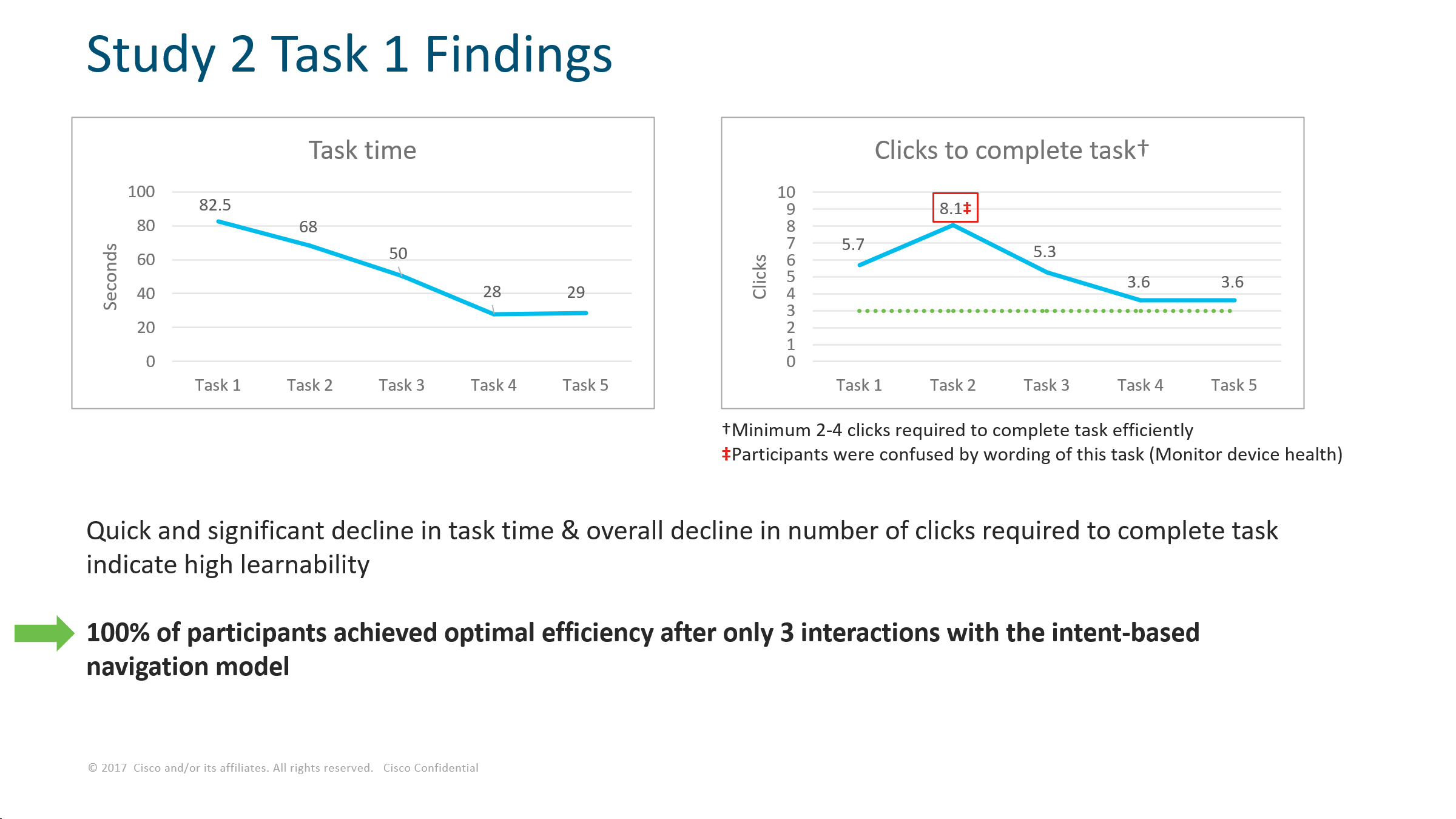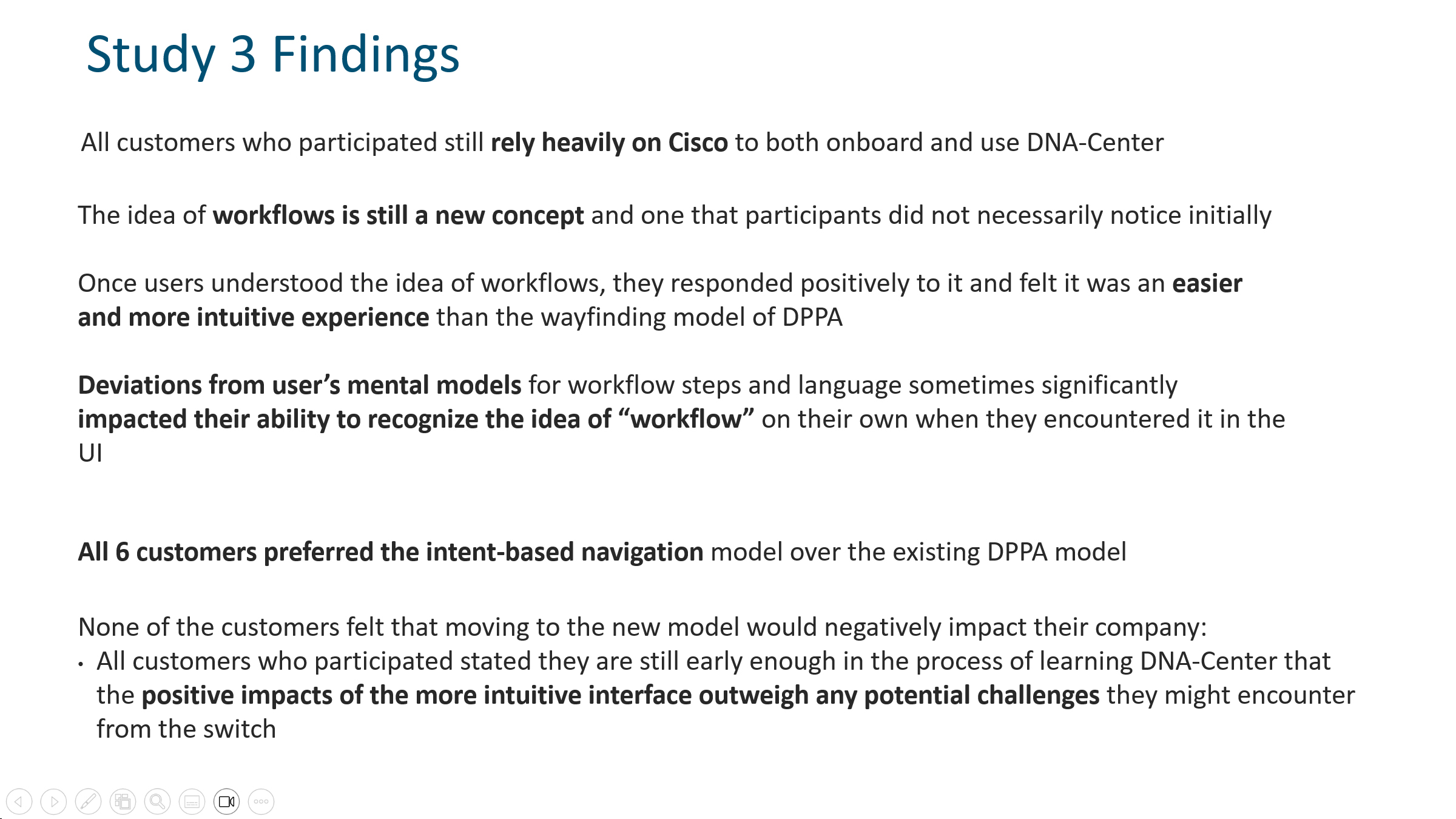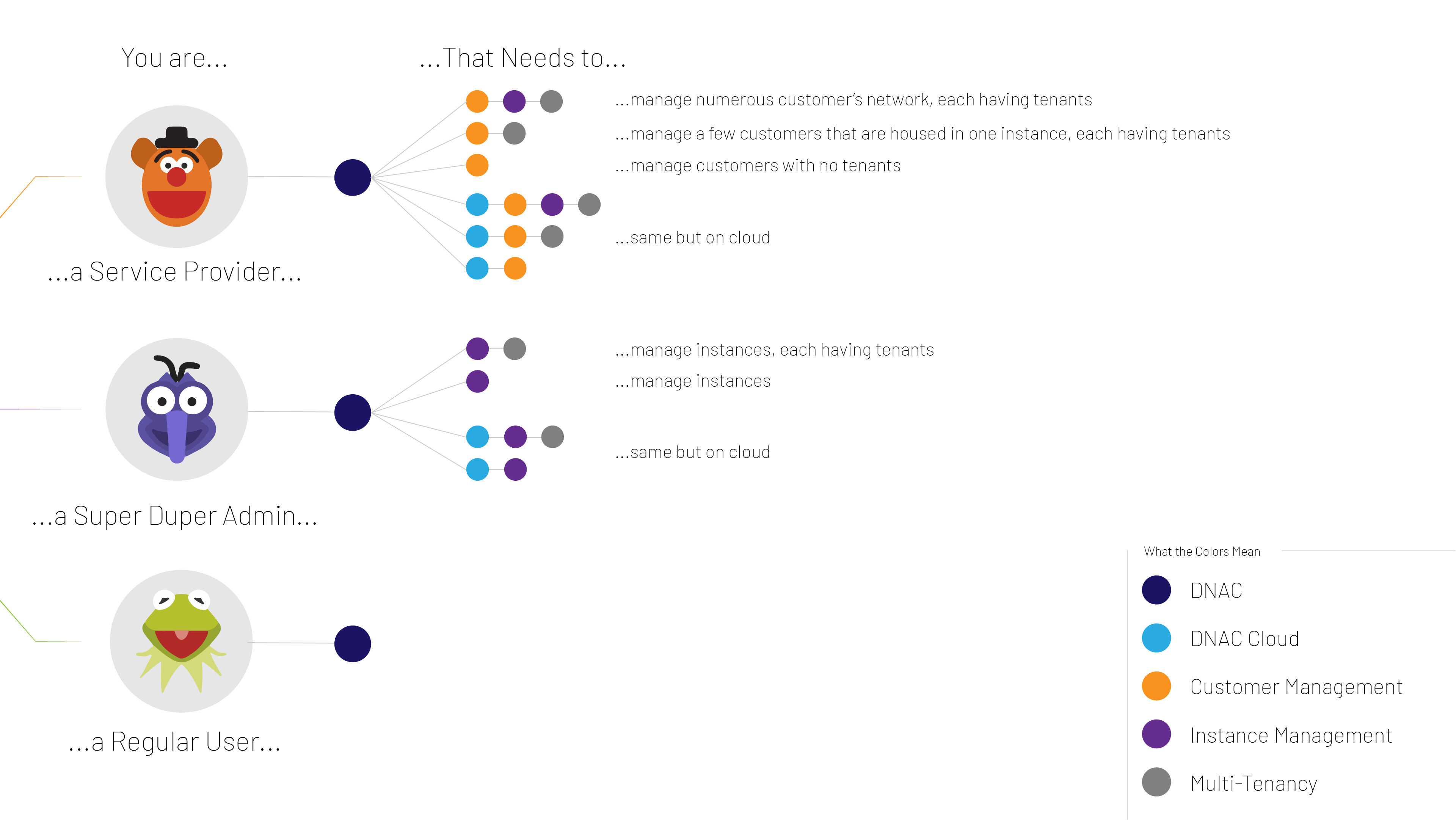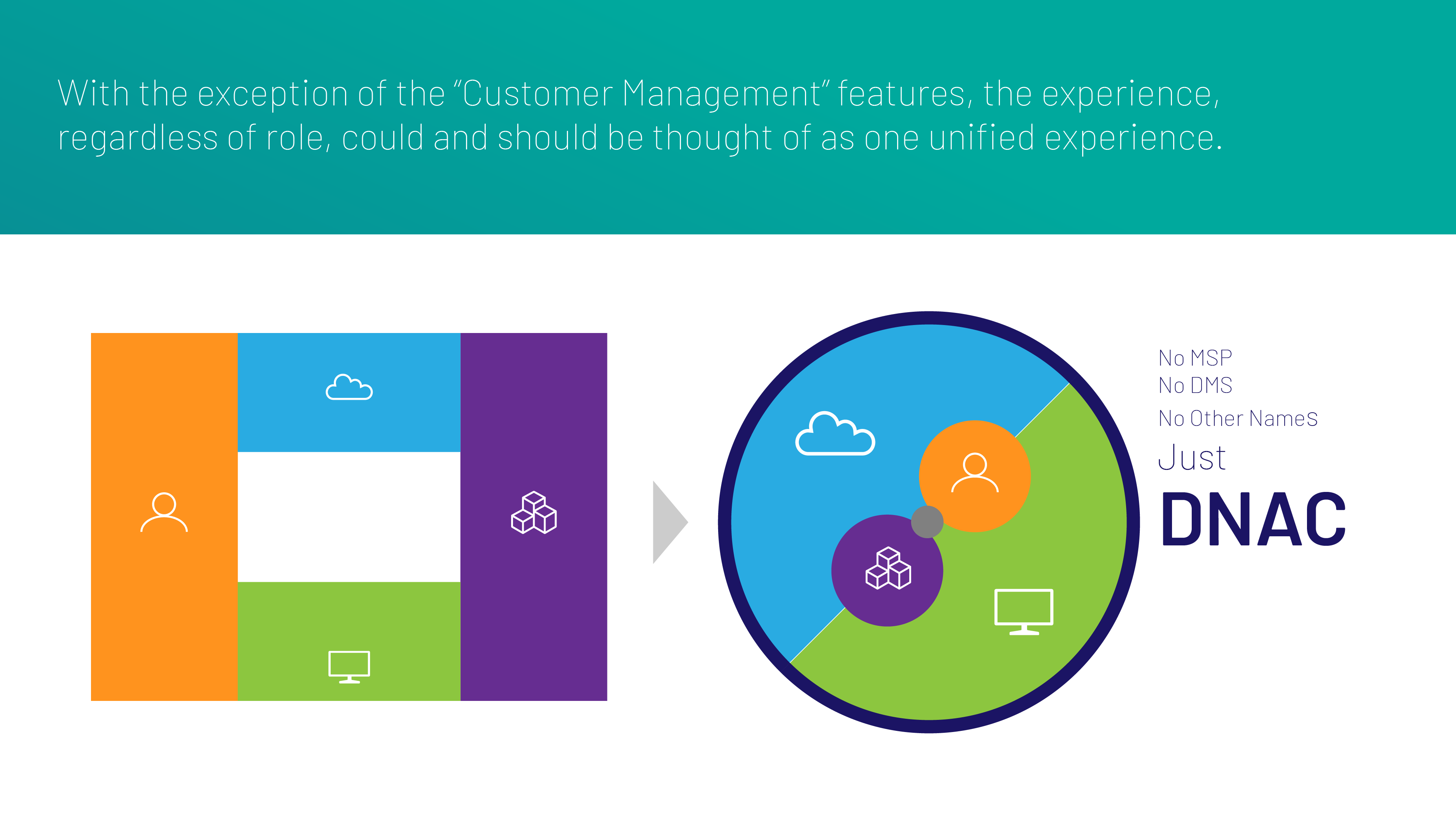
Cisco NXT
Cisco’s Network Experience Team (NXT) composed of design leaders, product designers, and researchers focused on creating a unified design system and scalable platforms for Cisco’s network security and infrastructure applications. I joined NXT as a Design Lead, where I handled smaller projects like a universal role-based access control (RBAC) framework, as well as larger scope projects such as the intent-based experience framework leveraging ML/AI. Additionally, I was responsible for the information architecture design for our unified network platform, the Digital Network Architecture Center (DNA-C).
ML/AI Driven Intent-Based User Experience
Cisco, traditionally a hardware producer, transitioned into the software business and expanded through numerous acquisitions. While these acquisitions and homegrown solutions filled solution gaps and achieved business strategy goals, they also created convoluted workflows for end users, posing a significant challenge in delivering a comprehensive, end-to-end user experience. Collaborating with our UX architect and a UX researcher, we were tasked with addressing these issues: how could we “stitch” these network solutions together from both a design and experience standpoint?
During this period (2018), machine learning was gaining significant momentum in the tech sector. At Cisco, we aimed to leverage this technology along with our customer data to its fullest extent. We hypothesized that by creating a framework that “layered” on top of various products and connected user tasks, we could avoid the costly and likely infeasible method of fully integrating all network solutions. This approach would provide our end users with an efficient and usable experience to accomplish their goals.
Overall Issues
From conducting end-user interviews, marketing surveys, and gathering customer feedback, we identified several key issues:
- Non-scalable, One-way Navigation Model: Our navigation model couldn’t accommodate the ever-expanding application functionality.
- UX “Cliffs” in Workflows: Users would reach a certain point in the workflow and lack guidance, information, or knowledge on what to do next.
- Lack of System Justification or Data: The “just do” approach conflicted with the analytical and logical nature of our engineering end users, as there was no data to indicate the root cause of problems.
- Loss of User Confidence and Trust: Users felt misunderstood, leading to sentiments like, “they don’t understand what we need.”
Initial Steps
After identifying the main issues and forming an overall hypothesis, our first challenge was to illustrate the significance of these problems. Given that ML/AI was still a relatively new concept, especially in the context of user experience, we embarked on a roadshow to educate our design leaders, product leaders, and stakeholders. We aimed to highlight the severity of the issues, their impact on our business, the concept of intent-based user experience, and the potential benefits and opportunities of pursuing this approach.
Examples of System Generated Guidance Driven by ML Based Intent
Before getting into user research and design, we briefly came up with some examples of guidance that the system could generate for end users:
Overview of Cross-Product Intent-Based Workflow Mapping
By aggregating the requirements across different user types and defining overarching user goals for the four major product areas, we mapped out how the intent-based user experience layer could seamlessly span across each area. This approach ensures that users can accomplish their goals without needing to search for or remember their next steps.
Cross-Product Collaboration Prototype
Collaborating closely with other product designers and their respective teams, we tapped into their expertise to understand how users resolve specific issues, the steps involved, and any dependencies on other settings or product areas. By analyzing how users currently navigate and resolve issues on the platform, our intent-based user experience project team was able to incorporate these insights into the guided workflow layer we were designing. Below is a brief example of how a user would locate, initiate, and complete the guided flow to achieve their goal:
Hypothesis Validation by UX Research
To ensure we were on the right track, we conducted three rounds of research to test various aspects of our hypothesis. We began with an unmoderated test involving a general population to see if users could locate the guided workflows and to gauge their preferences for the navigational menu. The second round was another unmoderated study, this time with a small group of customers and network engineers, to gather quantitative data on the efficiency of the current workflow versus the conceptualized guided intent-based workflows. The final round focused on qualitative data from customers, comparing the current workflow with the new intent-based workflows. The results from both the second and third rounds showed that participants significantly preferred and performed better with the intent-based workflows.
DNA-C Unified Platform
NXT was tasked with unifying all networking solutions, but with numerous teams working in silos, reaching a consensus on the unified solution and user experience was challenging. This complexity was compounded by the diverse primary user types (service providers, super admins, and casual users) and the various existing platforms, each with its own business case (multi-tenant service provider, DNA-C management system, DNA-C, and DNA-C Cloud). Through my involvement with the intent-based user experience project, I gained unique insights into each user type and business case. This enabled me to propose a solution that identified overlapping user needs and conceptualize the information architecture for a unified DNA-C platform that could support all user types and business cases. This approach allowed design and product teams to consolidate resources, build our platform at scale and reach our 10k adoption goal. The following are some of the screens taken from my presentation to product and design leadership:
Design, Policy, Provision & Assurance
The main responsibilities of a network engineer are embodied in these four primary categories:
- Design: This area focuses on creating the architecture and blueprint for network solutions. It involves planning and designing the network infrastructure to meet specific business requirements, ensuring scalability, reliability, and performance.
- Policy: This area deals with defining and managing network policies. It includes setting rules and policies for network access, security, and traffic management to ensure that the network operates efficiently and securely.
- Provision: This area is about deploying and configuring network devices and services. It involves the actual implementation of the network design, including the installation and setup of hardware and software components.
- Assurance: This area focuses on monitoring and maintaining the network. It includes tools and processes for ensuring network performance, reliability, and security, as well as troubleshooting and resolving issues as they arise.
Often abbreviated as DPPA, DNA-C was intended to integrate these four distinct products into a single platform, providing users with a centralized location to access the applications they need. However, initially, the products were unified in name only and still operated in silos. Data wasn’t shared, issues diagnosed in one product area that involved other areas left users guessing where to go next, and scalability was hindered by overlapping or similar features that slowed down development. The only unifying element was the design system that wrapped around all the products.
Fortunately, leadership supported my proposal to further integrate DPPA and transform it into a truly user-centric platform with cross product experiences. My role for this effort involved close collaboration with each product area, allowing me to leverage my experience from the intent-based user experience project and conceptualize a platform structure that could scale for each product while providing gateways for inter-product data sharing. Additionally, I designed navigational and information architecture models that segmented universal functions from product-specific functionalities, eliminating overlap within the platform. The follow are just a few screenshots from the prototype that was put together:
NXT Steps
Although my time at Cisco was brief, it was incredibly enriching. The challenging IC work taught me a great deal about end-to-end platform solutions and the application of ML in UX. The projects I worked on, the people I met, and the teams I collaborated with were all wonderful experiences. Through the success of my work, I demonstrated that designers are far more than just “mock-up machines” or “pixel pushers.” However, since completing my MBA in Design Strategy, I have aspired to take on leadership roles where I can influence cultural, product, and business changes by leading, mentoring, coaching, and inspiring designers, stakeholders, and other leaders.






